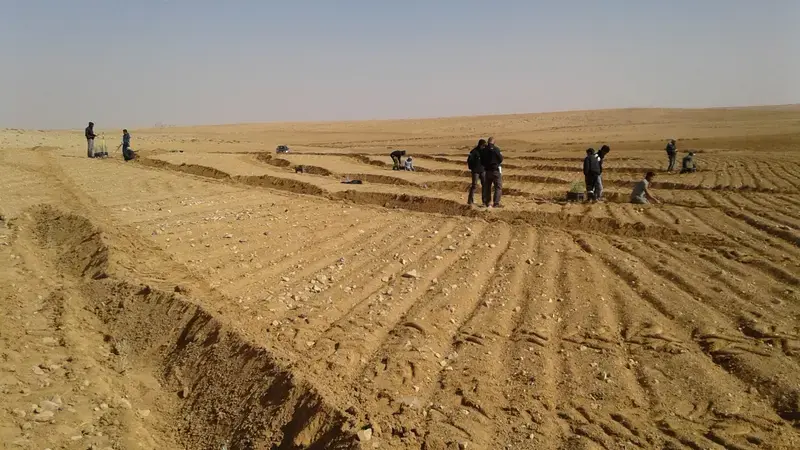Recovering The Degraded Soils Of The Badia In Jordan

Jordan’s Badia, a dry area covering 80% of the country, has become severely degraded by monocropping, poor land management and overgrazing in the past few decades. The region, which receives under 200 mm of rainfall annually, hosts over half of the nation’s livestock. The booming population, which results from subsequent waves of migration into the country, coupled to climate change, are putting added pressure on the country’s fast dwindling water resources.
To restore and conserve the degraded soil of Badia, ICARDA scientists worked with two communities in Mhareb and Majdieh to design, test, and promote suitable rainwater harvesting package. Restoration enhances the catchment, storage and efficient use of rainwater in Marabs, through plants, which will sustain a native cover and conserve the soil while reviving its ecosystem. The package combines indigenous knowledge with the adoption of inexpensive laser-guiding systems that effectively identify contours and optimal sites for the construction of micro-catchments using Vallerani ploughs. ICARDA scientists also implemented sustainable grazing strategies, and reintroduced native shrubs.
IMPACT
The farmers located on the targeted 2800 hectare stretch of rangelands in the Badia experienced a doubling in yield. Important rangeland shrubs’ yields increased 1.6 times, and the solution halted both soil and wind erosion.
The trials recorded an increase in barley production comprised between 50 and 200 kilograms per dunam - (1 dunum = 900 m2) - and almost stopped sediment loss through the construction of micro water harvesting structures.
In Mhareb and Majdieh, 80% and 90% of farmers used the package, respectively. Jordan’s Ministry of Environment also adopted it, allocating funds for its implementation across 2000 ha so far – an area the Ministry is planning to extend even further.
ICARDA’s rangeland restoration intervention resulted in rapid vegetation growth, increased animal feed production, reduced soil erosion, and enhanced biodiversity. The package is also cost-effective: it costs a mere USD 32/hectare – which includes the production, planting and maintenance of shrub seedlings – and the internal economic rate of return is estimated at 13%.
